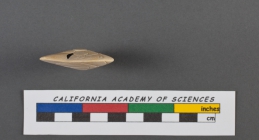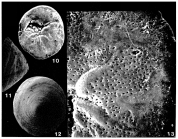RAS taxon details
Biasterigerina Seiglie & Bermúdez, 1965
721508 (urn:lsid:marinespecies.org:taxname:721508)
accepted
Genus
- Species Biasterigerina planorbis (d'Orbigny, 1846)
- Species Biasterigerina rosacea (d'Orbigny in Parker, Jones & Brady, 1865) accepted as Biasterigerina planorbis (d'Orbigny, 1846) (Opinion of Poignant (2017 pers. com.))
marine, brackish, fresh, terrestrial
recent + fossil
feminine
Seiglie, G. A., and P. J. Bermúdez, 1965, Observaciones sobre foraminiferos rotaliformes con camaras suplementarias o estructuras semejantes (1), Boletin del Instituto Oceanografico. Universidad de Oriente, Cumana 4:155-171.
page(s): p. 159 [details]
page(s): p. 159 [details]
Hayward, B.W.; Le Coze, F.; Vachard, D.; Gross, O. (2021). World Foraminifera Database. Biasterigerina Seiglie & Bermúdez, 1965. Accessed through: RAS (Eds.) (2021) Register of Antarctic Species at: http://ras.biodiversity.aq/aphia.php?p=taxdetails&id=721508 on 2025-09-12
RAS (Eds.) (2025). Register of Antarctic Species. Biasterigerina Seiglie & Bermúdez, 1965. Accessed at: https://ras.biodiversity.aq/aphia.php?p=taxdetails&id=721508 on 2025-09-12
Date
action
by
original description
Seiglie, G. A., and P. J. Bermúdez, 1965, Observaciones sobre foraminiferos rotaliformes con camaras suplementarias o estructuras semejantes (1), Boletin del Instituto Oceanografico. Universidad de Oriente, Cumana 4:155-171.
page(s): p. 159 [details]
basis of record Loeblich, A. R.; Tappan, H. (1987). Foraminiferal Genera and their Classification. Van Nostrand Reinhold Company, New York. 970pp., available online at https://books.google.pt/books?id=n_BqCQAAQBAJ [details] Available for editors
page(s): p. 159 [details]
basis of record Loeblich, A. R.; Tappan, H. (1987). Foraminiferal Genera and their Classification. Van Nostrand Reinhold Company, New York. 970pp., available online at https://books.google.pt/books?id=n_BqCQAAQBAJ [details] Available for editors



